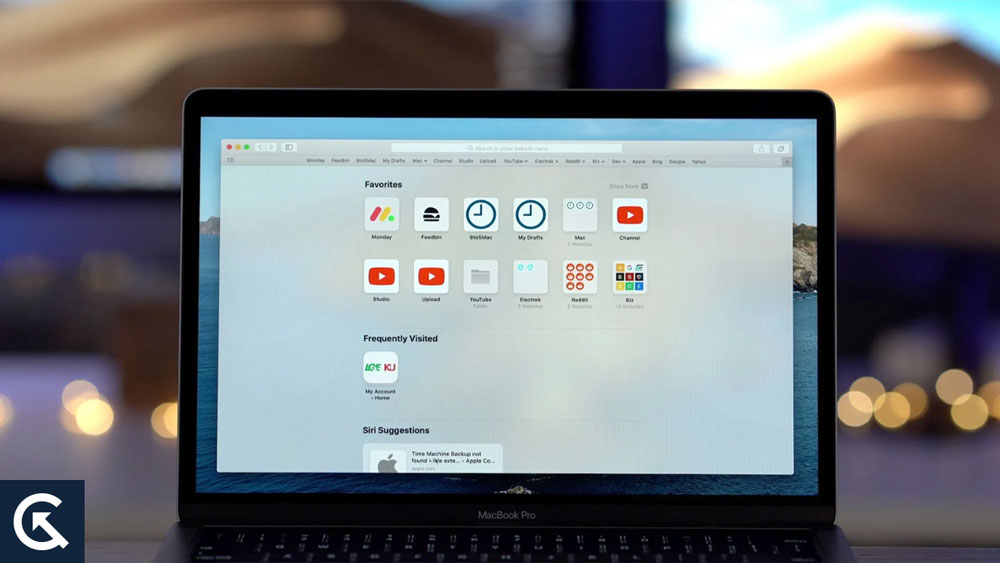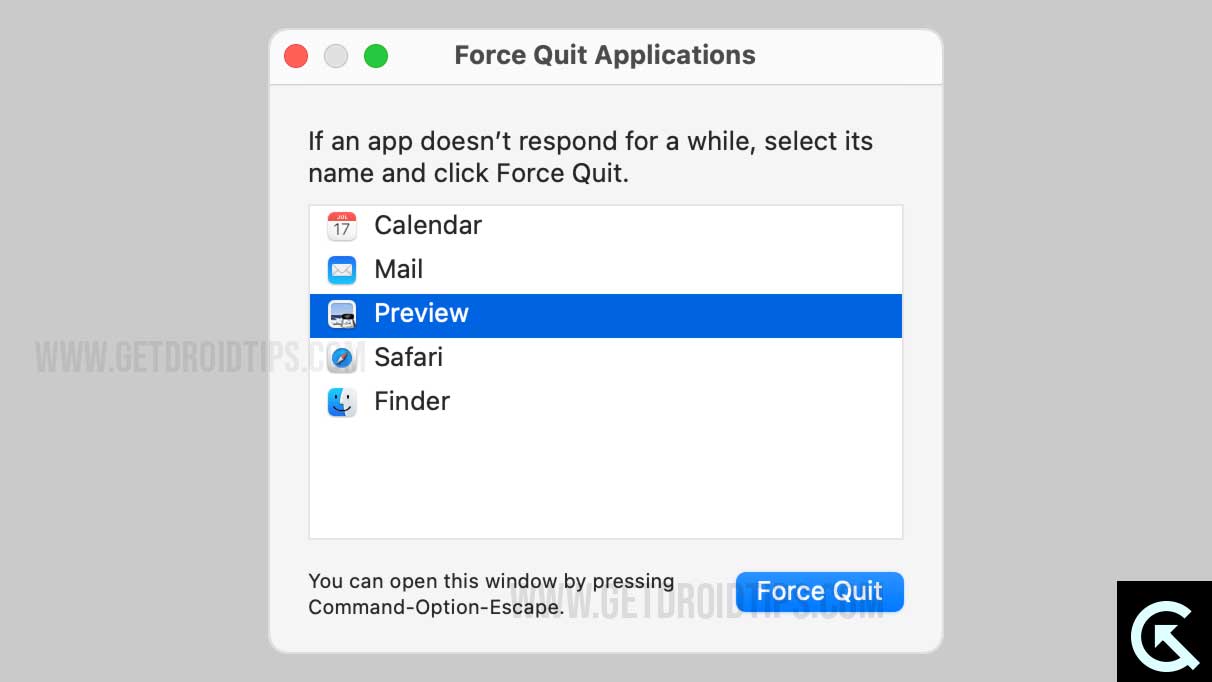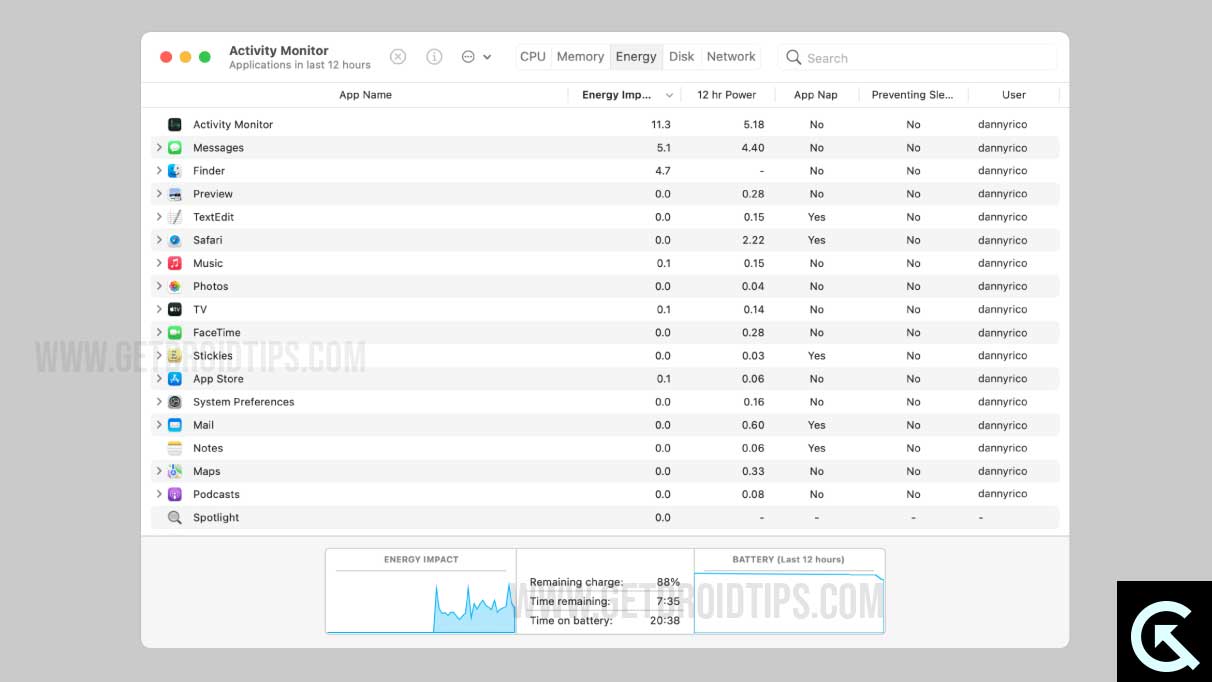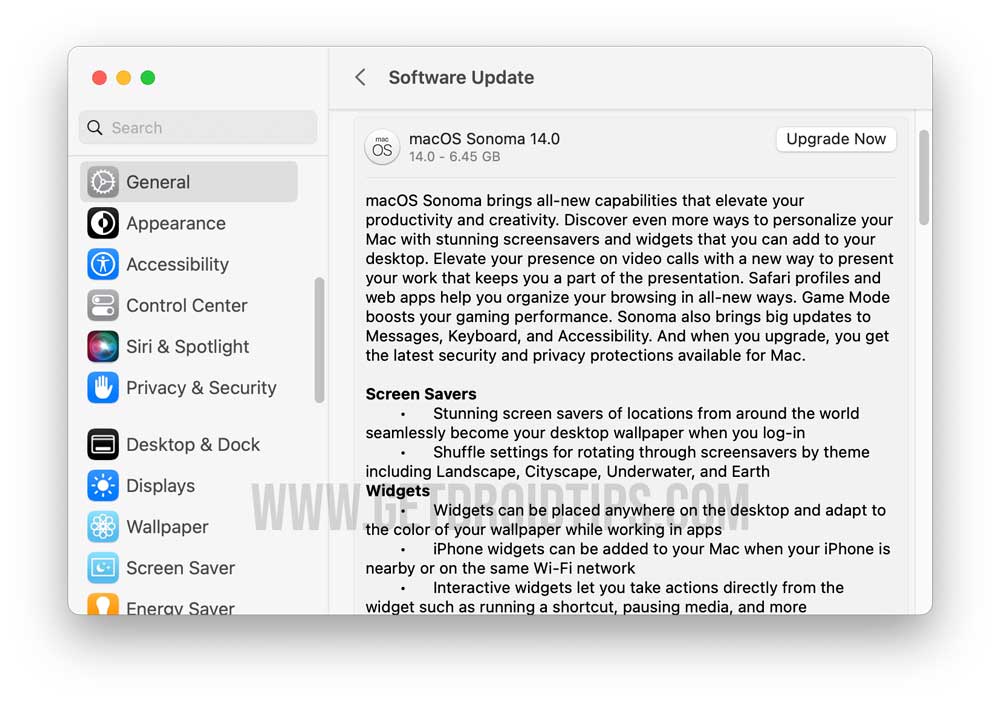Safari is one of the most popular browsers on Mac and is the default browser by default. Security features and a user-friendly interface are why Mac users love their devices. It enhances Apple’s software consistency across devices, adding a whole layer of functionality to your Mac. However, many users recently faced a crashing issue after updating their devices to macOS Sonoma. Well, there is nothing to worry about as we have some fixes to this problem. So, if you want to know those fixes, read the guide until the end.

Page Contents
- Why is macOS Sonoma crashing?
- Fix: Safari Keeps Crashing After macOS 14 Sonoma Update
- Fix 1: Force Quit Safari
- Fix 2: Close browser tabs
- Fix 3: Restart in safe mode
- Fix 4: Investigate with Activity Monitor
- Fix 5: Update the app that’s crashing
- Fix 6: Update macOS
- Fix 7: Disable Safari Extensions
- Fix 8: Update Safari
- Fix 9: Clear Safari Cache and Data
- Fix 10: Delete Preferences File of Safari (Only for Mac)
Why is macOS Sonoma crashing?
MacOS Sonoma crashing can have several causes. There’s a possibility that your application isn’t compatible with Sonoma. Your Mac could be overwhelmed by Sonoma’s demands, making it unable to handle the additional strain. You may have login items or launch agents installed that don’t work well in Sonoma, or you may have files elsewhere on your Mac that conflict with Sonoma. It can be fixed by starting with the simplest and most likely causes and eliminating them individually.
Fix: Safari Keeps Crashing After macOS 14 Sonoma Update
So, now you know the different reasons Safari keeps crashing after the macOS 14 Sonoma update; therefore, it’s time to find the fixes you can use to fix it. Thus, let’s get started with the guide.
Fix 1: Force Quit Safari

Force quitting Safari on Mac is a straightforward solution to problems with Safari. There is no need to keep the browser open if you cannot use it. To fix the issue, close it forcefully, open it again, and see if the problem persists. Here are the steps you need to follow to force quit Safari:
- To access the Apple menu, go to the Apple menu.
- Select “Force Quit“.
Fix 2: Close browser tabs
There is a lot of use of RAM and CPU resources to update 20 or 30 tabs at once in the background, which leads to a lot of RAM and CPU usage. There are many reasons why macOS Sonoma might crash on your Mac. If you’re not using any tabs now, close them and bookmark the ones you want to find later.
- Choose File after pressing the Option(Alt) key.
- Select Close Other Tabs.
Fix 3: Restart in safe mode
Your Mac starts properly in Safe mode when you restart it with just the extensions it needs. Furthermore, it checks Macs with Apple silicon and repairs any problems. It is a good idea to restart in safe mode to determine if a system extension is causing macOS Sonama to crash. If your Mac runs on an Intel processor or an Apple silicon processor, you boot into safe mode differently.
Apple silicon
- If you don’t see ‘Loading startup options‘ on the screen, turn your Mac off, then press and hold the power button.
- You can choose your startup disk by holding down the Shift key when you see the option on the screen.
- In Safe Mode, click Continue.
- Restart your Mac, and you will see a menu bar option labeled ‘Safe Boot.’
Intel
- Turn off your Mac.
- Press the power button while holding down the Shift key.
- Afterward, you see the login window, let go of the Shift key.
- Enter your admin username and password.
- If prompted, log in again.
- On your Mac, you will see the Safe Boot menu when it boots.
Fix 4: Investigate with Activity Monitor

If you have a problem with your Mac, Activity Monitor can help you solve it. Each process can be monitored for RAM usage or energy consumption. You can instantly determine whether one process is causing problems by clicking on the top of a column, like CPU cycles. Once you have quit the process in Activity Monitor’s toolbar, you will be prompted to restart it. Here’s how it works:
- Select Applications > Utilities and open Activity Monitor.
- Examine the CPU, Memory, and Energy tabs to determine if a process is hogging system resources. You may be able to find one if you find one that causes macOS Sonoma to crash.
- When you click X, the process will be terminated.
Fix 5: Update the app that’s crashing
You should check whether an update is available for the app that crashes macOS Sonoma when you run it. However, you can check the updates section in the App Store app if you download it from there. When you launch the app, click its name to open the menu, then choose Check for Updates if you didn’t get it from the App Store.
Fix 6: Update macOS

The next step is to check for OS updates after restarting. An update may have fixed the problem you’re experiencing:
- Initially, go to the Apple menu and select System Settings.
- Choose Software Update under General.
- Use the instructions to install an update if one is available as soon as it checks.
Fix 7: Disable Safari Extensions
You can improve your Safari browsing experience by installing extensions, didn’t you know? It can, however, quickly become a hindrance as well. It can cause a browser crash if extensions are out-of-date. Ideally, Safari extensions should be disabled. Here are the steps you can follow:
- On the menu bar, click “Safari.”
- Thereafter, from the drop-down menu, select “Settings” or “Preferences“.
- On the left side, click “Extensions“. In this section, you will see a list of extensions.
- Make sure all the boxes are unchecked and deactivated.
Fix 8: Update Safari
Do you know if Safari has been updated recently? In case you haven’t done so yet, you should do so immediately. In order for your Mac to operate efficiently, all applications and programs must be up-to-date. It is also advisable to use the latest version of Safari in order to prevent the occurrence of software-related bugs. Due to the fact that the browser and OS X are integrated, you only need to update the OS. As a result, Safari is also updated. Here are the steps you need to follow to update Safari:
- Select the Apple menu.
- From the drop-down menu, select “System Settings” (also called System Preferences on some macOS versions).
- To update software, click “Software Update” on the right after clicking “General” on the left.
- Check for updates. Choose “Update Now” if you find any.
Fix 9: Clear Safari Cache and Data
It is crucial to have cache files in place so that websites load more quickly. You will notice a faster loading speed when you visit the website again after you have installed these files. However, Safari may be slowed down as a result. If that is the case, you should clear Safari cache and data on Mac and iOS.
When you are using a Mac,
- Open Safari.
- Go to Safari > Preferences.
- Go to the Advanced tab.
- On the menu bar, check the box that says Show Develop menu.
- On the top menu, click Develop, then close the Preferences.
- Click Empty Caches.
- On the History page, click Clear History.
Fix 10: Delete Preferences File of Safari (Only for Mac)
If Safari crashes on MacBook Pro, Mac, it’s best to remove the preferences file from the app.
- Open the Finder.
- On the Go menu, select Go to folder.
- Go to ~/Library/Safari/.
- Drag all Safari app-related files to the Trash.
So, that’s all we have for you on how to fix the Safari keeps crashing after the macOS 14 Sonoma update. It’s our hope that you find this troubleshooting guide helpful. In case you have any queries, you can ask in the comment section.
